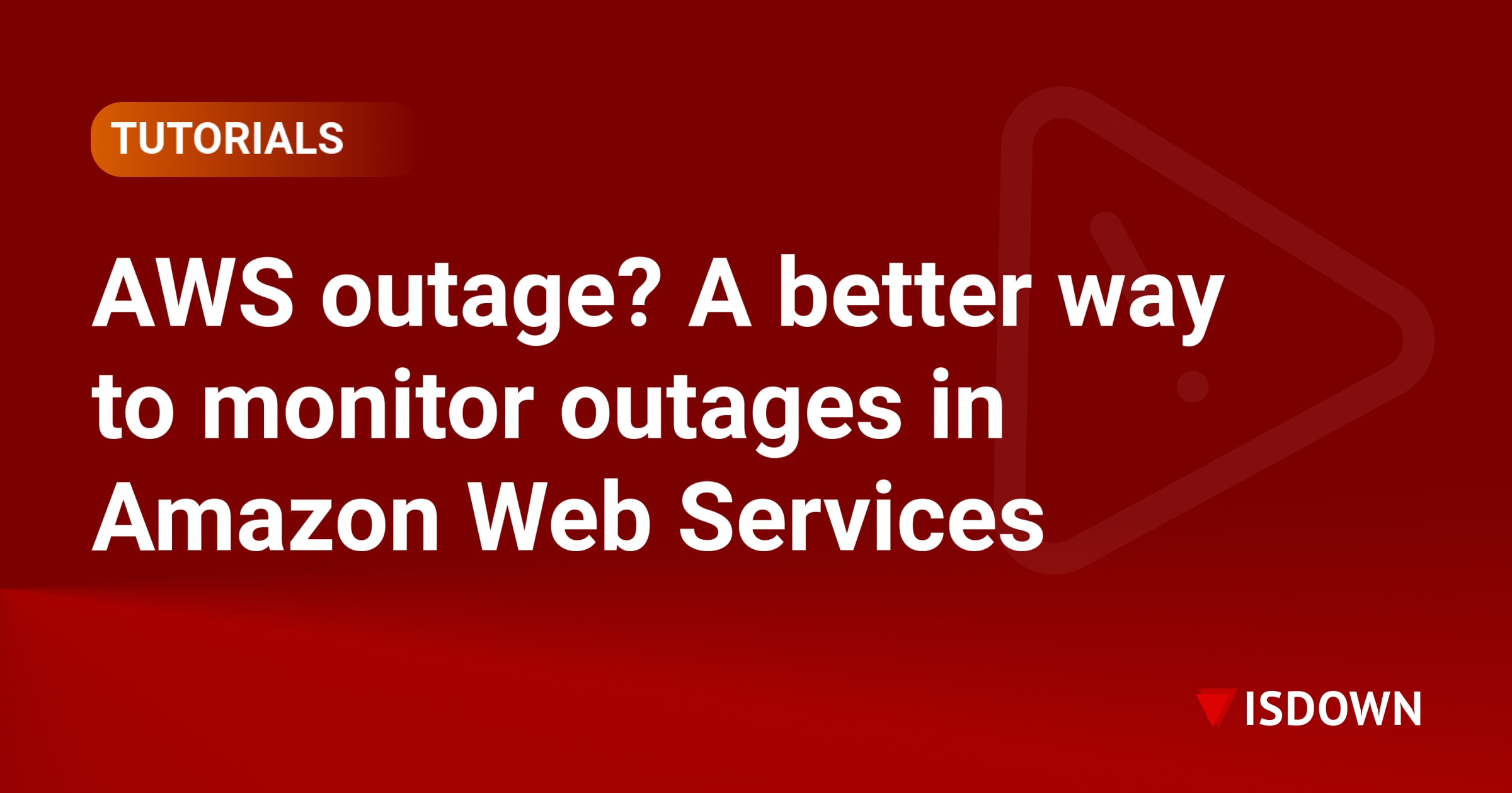Best Practices for Managing Multiple Vendor Dependencies
Modern businesses rely on dozens of third-party services to operate efficiently. From payment processors and cloud providers to analytics tools and communication platforms, these vendor dependencies form the backbone of your technology stack. When one fails, it can trigger a cascade of issues across your entire operation.
Managing multiple vendor dependencies requires a strategic approach that combines proactive monitoring, clear documentation, and well-defined response procedures. Let's explore the best practices that help teams maintain control over their third-party ecosystem.
Start with Comprehensive Dependency Mapping
Dependency mapping is the foundation of effective vendor management. You need to understand not just which services you use, but how they interconnect and impact your operations.
Begin by cataloging every third-party service your organization relies on. Include:
- API dependencies
- Cloud infrastructure providers
- SaaS applications
- Payment processors
- Communication tools
- Analytics and monitoring services
For each dependency, document its criticality level. Some services are mission-critical (like your payment processor), while others are important but not immediately business-threatening if they fail (like an analytics platform).
Create a visual dependency map that shows how services connect. This helps identify single points of failure and cascading failure scenarios. When AWS goes down, which of your other services are affected? If your CDN fails, what functionality becomes unavailable?
Implement Centralized Third-Party Monitoring
Monitoring your own infrastructure isn't enough. You need visibility into the health of every vendor you depend on. This is where centralized monitoring becomes essential.
Set up monitoring for:
- Vendor status pages
- API endpoints you consume
- Service performance metrics
- Historical uptime data
Tools like IsDown aggregate status information from hundreds of services, providing a single dashboard for all your vendor dependencies. This eliminates the need to manually check multiple status pages during incidents.
Configure alerts based on service criticality. Mission-critical dependencies should trigger immediate notifications, while less critical services might only need daily summary reports.
Establish Clear Vendor Management Policies
Create standardized policies for how your team evaluates, onboards, and manages vendors. These policies should cover:
Vendor evaluation criteria:
- Uptime SLA requirements
- Security and compliance standards
- Support response times
- Data portability options
- Business continuity plans
Onboarding procedures:
- Technical integration requirements
- Documentation standards
- Contact information collection
- Escalation path definition
Ongoing management:
- Regular SLA reviews
- Performance monitoring
- Relationship management
- Contract renewal assessments
Build Redundancy and Fallback Strategies
Never assume your vendors will maintain 100% uptime. Build redundancy into your architecture wherever possible.
For critical services, consider:
- Multi-vendor strategies (using multiple payment processors)
- Graceful degradation (showing cached data when analytics fail)
- Circuit breakers (automatically failing over when services are down)
- Local fallbacks (queueing transactions for later processing)
Document these fallback procedures in your runbooks so your team knows exactly what to do when vendors fail.
Maintain Up-to-Date Vendor Documentation
Keep comprehensive documentation for each vendor relationship:
- Technical details: API keys, endpoints, integration points
- Business information: Contract terms, SLAs, renewal dates
- Contact information: Support channels, account managers, escalation contacts
- Historical data: Past incidents, performance metrics, communication logs
This documentation proves invaluable during incidents and contract negotiations. Store it in a centralized, accessible location that your entire team can reference.
Create Vendor-Specific Incident Response Plans
Different vendor failures require different responses. A payment processor outage demands immediate action, while a marketing analytics tool failure might only need monitoring.
Develop specific response plans for each critical vendor:
- Detection mechanisms
- Initial response steps
- Communication templates
- Escalation procedures
- Recovery validation
Integrate these plans into your broader incident response framework. When vendors fail, your team should know exactly who to contact and what actions to take.
Regular Vendor Performance Reviews
Schedule quarterly reviews of your vendor relationships. Analyze:
- Uptime performance against SLAs
- Support response times
- Feature delivery and roadmap alignment
- Cost-benefit analysis
- Market alternatives
Use this data to make informed decisions about continuing, expanding, or replacing vendor relationships. Don't wait for contract renewal to evaluate performance.
Establish Strong Communication Channels
Effective vendor management requires clear communication channels:
Internal communication:
- Regular vendor status updates to stakeholders
- Incident notifications to affected teams
- Performance reports to leadership
External communication:
- Regular check-ins with vendor account managers
- Participation in vendor user communities
- Feedback on product roadmaps and feature requests
Strong relationships with vendor teams often lead to better support during critical incidents.
Plan for Vendor Transitions
Vendor relationships don't last forever. Whether due to performance issues, cost concerns, or strategic changes, you'll eventually need to transition away from some vendors.
Prepare for transitions by:
- Maintaining data export capabilities
- Documenting integration points
- Keeping contracts flexible
- Building abstraction layers in your code
- Testing migration procedures regularly
Continuous Improvement Through Post-Mortems
When vendor-related incidents occur, conduct thorough post-mortems. Examine:
- How quickly you detected the vendor issue
- Whether your response plans worked effectively
- Communication effectiveness (internal and external)
- Impact on your customers
- Lessons learned for future incidents
Use these insights to refine your vendor management practices continuously.
Frequently Asked Questions
What is vendor dependency mapping?
Vendor dependency mapping is the process of documenting all third-party services your organization relies on and understanding how they connect to your systems and each other. It involves creating visual diagrams and documentation that show which vendors are critical to specific business functions and how failures might cascade through your infrastructure.
How many vendors should we actively monitor?
You should actively monitor all vendors that directly impact your customer experience or core business operations. This typically includes 10-30 services for most organizations, covering payment processors, cloud providers, communication tools, and critical SaaS applications. Less critical vendors can be monitored with lower frequency or only during business hours.
What's the difference between vendor management and vendor monitoring?
Vendor management encompasses the entire relationship lifecycle including selection, contracting, performance reviews, and strategic planning. Vendor monitoring is specifically focused on tracking the operational health and availability of vendor services in real-time. Monitoring is one component of comprehensive vendor management.
How do we prioritize which vendors need redundancy?
Prioritize redundancy based on business impact and feasibility. Start with vendors that would cause immediate revenue loss or customer impact if they failed, such as payment processors or core infrastructure providers. Consider the cost and complexity of implementing redundancy against the potential impact of downtime for each service.
Should we build or buy a vendor monitoring solution?
For most organizations, buying a vendor monitoring solution is more cost-effective than building one. Purpose-built tools like IsDown already aggregate hundreds of vendor status pages and provide integration with your existing incident management workflow. Building this functionality internally requires significant ongoing maintenance and doesn't provide the network effects of a shared monitoring platform.
How often should we review our vendor dependencies?
Conduct a comprehensive review of all vendor dependencies quarterly, with lightweight monthly check-ins for critical services. Additionally, trigger reviews whenever you experience a vendor-related incident, add a new major dependency, or notice performance degradation. Annual reviews should include strategic assessment of the entire vendor portfolio.
 Nuno Tomas
Founder of IsDown
Nuno Tomas
Founder of IsDown
The Status Page Aggregator with Early Outage Detection
Unified vendor dashboard
Early Outage Detection
Stop the Support Flood
Related articles
Never again lose time looking in the wrong place
14-day free trial · No credit card required · No code required




